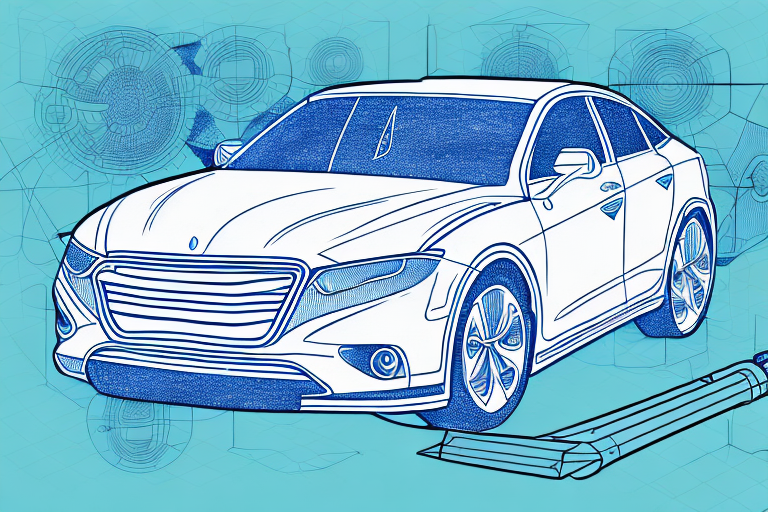Acoustics are a crucial element in the vehicle design process. While many people focus on engine performance and aesthetic appeal, the sound environment within a car can significantly impact user experience. This blog post explores how acoustics play a vital role in vehicle design, from reducing noise to optimizing audio systems. Whether you’re in the car industry or simply curious about your ride’s soundscape, there’s plenty to learn about the symphony of design that makes your drive enjoyable.
The Science of Sound in Motion
Every vehicle, regardless of make or model, produces sound. Understanding these sounds and their sources helps designers create a more pleasant driving experience. Sound comes from various places in a vehicle, including the engine, tires, wind, and interior components like the HVAC system. Engineers work to minimize unwanted noise while enhancing desirable sounds, such as the engine’s purr or the thrum of a quality audio system.
To achieve this balance, vehicle designers use advanced techniques and materials. Soundproofing materials, such as acoustic glass and dense foam, help block external noise. Additionally, precise engineering of a car’s shape reduces aerodynamic noise. Together, these elements contribute to a quieter and more enjoyable vehicle interior.
Reducing Road Noise
One of the greatest challenges in vehicle design is minimizing road noise. This type of noise results from tire friction on the pavement and can be particularly bothersome on certain road surfaces. Designers address this issue through innovative tire designs and suspension systems that absorb vibrations. The type of material used in tire construction also plays a role, with softer compounds generally offering quieter rides.
Furthermore, the car’s body and undercarriage can impact road noise levels. Engineers often design these elements with aerodynamic principles in mind, aiming to deflect and reduce the sounds generated by air currents. By paying attention to these details, designers create vehicles that offer a smoother, quieter ride.
The Magic of Acoustic Materials
Acoustic materials are integral to managing sound within a vehicle. These materials help absorb, dampen, or block unwanted noise from entering the cabin. Common acoustic materials include heavy-duty carpeting, specialized door seals, and noise-absorbing foams.
Car manufacturers often use a layering approach, combining different acoustic materials for optimal sound management. For instance, a vehicle’s floor may have multiple layers of insulation to block road noise, while its doors may contain sound-deadening panels. This attention to detail enhances the overall driving experience, making each trip more comfortable and enjoyable.
Designing the Perfect Sound System
A vehicle’s audio system is a key component of its acoustic environment. Designing an effective sound system involves careful consideration of speaker placement, power output, and sound quality. Engineers strive to create a balanced audio experience, ensuring that music and voice sound clear and immersive.
Speakers are strategically placed throughout the vehicle to optimize sound distribution. Tweeters, which produce high frequencies, are generally mounted near the dashboard, while mid-range and woofer speakers are positioned in the doors and rear of the vehicle. This setup provides a rich, surround-sound experience for all passengers.
In addition to speaker placement, the materials used in a car’s interior can impact audio quality. Soft materials like leather and fabric tend to absorb sound, while hard surfaces can reflect it. Engineers account for these factors when designing a vehicle’s interior, ensuring that the car’s acoustics enhance rather than detract from the audio experience.
Acoustics and Driver Safety
Sound can also play a role in driver safety. Modern vehicles often incorporate auditory alerts to warn drivers of potential hazards. These sounds must be clear and distinguishable from other noises within the vehicle. Engineers use acoustic principles to ensure these alerts are attention-grabbing without being overly disruptive.
Additionally, creating a quiet cabin environment can improve driver focus. By reducing extraneous noise, drivers can better concentrate on the road and their surroundings. This focus enhances safety and contributes to a more pleasant driving experience.
The Future of Vehicle Acoustics
The future of vehicle acoustics is exciting, with advancements in technology promising even more refined sound experiences. Electric vehicles, for example, offer a quieter ride due to their lack of a traditional combustion engine. However, this silence poses unique challenges, as some engine noise is necessary for safety. Manufacturers are experimenting with synthetic engine sounds to maintain safety while enhancing the auditory experience.
Another trend is the integration of smart technology into vehicle acoustics. Voice-activated systems and AI-driven sound customization offer personalized audio experiences. These innovations continue to push the boundaries of what is possible in vehicle design, promising a future where sound plays an even greater role in shaping our driving experiences.
Conclusion
Acoustics form an essential part of vehicle design, influencing everything from road noise reduction to audio system optimization. Understanding and harnessing the power of sound allows engineers to create vehicles that offer a superior driving experience. Whether you’re interested in how your car’s sound system was engineered or curious about car audio installation in Utah, the field of vehicle acoustics offers exciting opportunities to explore and innovate. Keep an ear tuned to the latest developments, and enjoy the harmonious balance of technology and design in your next ride.
Keep an eye for more latest news & updates on USA Topic Network!
